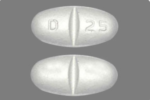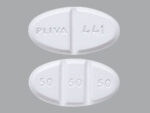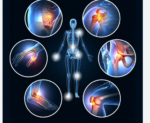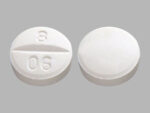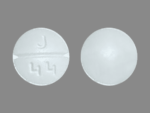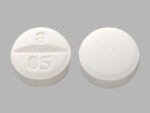Usual Adult Dose for Depression
Initial dose: 150 mg orally per day in divided doses; this may be increased by 50 mg orally per day every 3 to 4 days
Maximum dose:
- Inpatients: 600 mg/day
- Outpatients: 400 mg/day
Comments:
- Patients should be screened for a personal/family history of bipolar disorder, mania, or hypomania prior to initiating treatment.
- Patients should be monitored for withdrawal symptoms when discontinuing therapy.
- After an adequate response has been reached, dosage may be gradually reduced depending on therapeutic response.
- If drowsiness develops, a major portion of the daily dose may be administered at bedtime or a reduction of dosage may be necessary.
- This drug should be taken shortly after a meal or light snack.
Use: Treatment of major depressive disorder (MDD)
Renal Dose Adjustments
Use with caution.
Liver Dose Adjustments
Use with caution.
Dose Adjustments
Switching to/from a MAOI:
- From a MAOI used to treat psychiatric disorders: Allow at least 14 days before beginning this drug.
- To a MAOI used to treat psychiatric disorders: Allow at least 14 days after stopping this drug before beginning treatment with the MAOI.
- Use with linezolid or IV methylene blue: If treatment is absolutely necessary, promptly discontinue treatment with this drug.
Concomitant administration with strong CYP450 3A4 inducers/inhibitors:
- Strong CYP450 3A4 inducers: Providers should consider increasing the dose of this drug based on tolerability and therapeutic response.
- Strong CYP450 3A4 inhibitors: Providers should consider decreasing the dose of this drug based on tolerability and therapeutic response.
Treatment withdrawal:
- A gradual dose reduction is recommended instead of abrupt cessation where possible.
Precautions
US BOXED WARNINGS:
SUICIDAL THOUGHTS AND BEHAVIORS:
- Antidepressants increased the risk of suicidal thoughts and behaviors in pediatric and young adult patients in short-term studies.
- Closely monitor all antidepressant-treated patients for clinical worsening and emergence of suicidal thoughts and behaviors.
- This drug is not approved for use in pediatric patients.
Safety and efficacy have not been established in patients younger than 18 years.
Consult WARNINGS section for additional precautions.
Dialysis
Data not available
Other Comments
Administration advice:
- Tablets can be swallowed whole or administered as a half tablet by breaking the tablet along the score line.
- Tablets should not be chewed or crushed.
- Tolerability may be improved by taking the drug after a meal.
Storage: Protect from light.
Reconstitution/preparation techniques:
- Oral solutions should not be mixed with other products.
Monitoring:
- Cardiovascular: Orthostatic vital signs in at-risk patients
- Metabolic: Monitor for increases in blood sugar, weight, and lipids; monitor electrolytes and fluids in patients with symptomatic hyponatremia
- Nervous system: Monitor for serotonin syndrome
- Psychiatric: Patients should be monitored for worsening and emergence of suicidal thoughts.
Patient advice:
- This drug may impair judgment, thinking, or motor skills; have patient avoid driving or operating machinery until adverse effects are determined.
- Advise patients to speak to physician or health care professional if they are pregnant, intend to become pregnant, or are breastfeeding.
- Patients should be informed of the possibility of priapism, hyponatremia, neuroleptic malignant syndrome, and tardive dyskinesia, and what to do if symptoms occur.
- Patients, families, and caregivers should be educated on the risks of suicidal thoughts and behaviors, as well as the risk of mania and hypomania; what to watch for and when to seek medical advice.
Pain Medications, Pain Relief, and Pain Management
